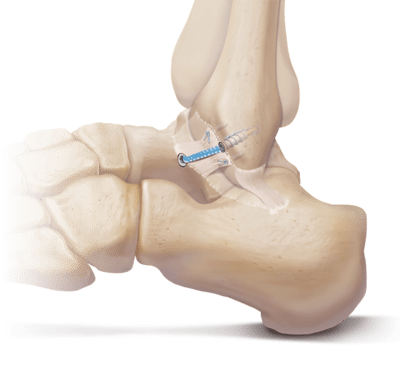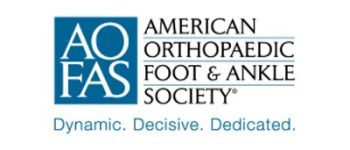About Lateral Ligament Injury
An ankle ligament injury – often referred to as an ankle sprain – is one of the most common sports injuries. It involves damage to at least one of the ligaments located around the outer ankle. There are three ligaments – which provide stability to the joint – situated at the outer aspect of the ankle; the ATFL, CFL and PTFL. The most common type of ankle lateral ligament injury is sustained to the ATFL, with injuries to the CFL being the next most common.
Causes
An ankle lateral ligament injury involves the ligaments in the foot and ankle being stretched or torn. This occurs when the ankle joint is pushed into a position which is beyond its normal range of motion. The rolling, turning or twisting of the ankle which leads to an ankle ligament injury can happen when playing a wide range of sports, as well as walking or running on an uneven surface.
It has been found that individuals with hypermobility in their ligaments are at a higher risk of sustaining an ankle lateral ligament injury. There are also certain foot types which are understood to be more conducive to suffering an ankle lateral ligament injury.
Symptoms
The predominant symptoms of an ankle lateral ligament injury are swelling and pain at the outer part of the ankle. You may experience a ‘popping’ sensation at the moment when the injury occurs. Bruising may also present itself in the days following the injury. It may be hard for you to put weight on the affected ankle while recovering from an ankle lateral ligament injury. This can result in a limp.

Treatment
An ankle lateral ligament injury can typically be diagnosed via a physical examination and tests such as an x-ray and MRI scan.
The vast majority of ankle lateral ligament injuries, including those which are classed as severe, can be treated by non-surgical means in the first instance. A general guide is provided by the RICE method of treatment – that is, Rest, Ice, Compression and Elevation. In the immediate aftermath of the injury, ice treatment, applied for periods of 15 minutes at a time, can help to address swelling and pain. It is important that the ankle is kept immobilised and protected during the recovery period.
Nonsteroidal anti-inflammatory drugs (NSAID) such as ibuprofen can help to reduce inflammation and pain during the recovery period, although it should be noted the RICE procedure is understood to be more critical to recovery than the consumption of painkillers.
Exercise routines recommended by a physiotherapist can help to build strength in the muscles around the ankle joint, and gradually restore range of motion.
Surgery is typically required in cases when a rapid return to physical activities, such as sports, is required. Or when there is cartilage damage in the ankle joint. Surgery is also helpful when people suffer from recurrent ankle sprains and lateral ankle instability that is when the ankle keeps going over on itself unexpectedly.
The Brostrum lateral ligament reconstruction is the first line procedure of choice and is very successful at treating ankle instability. It is often performed together with an ankle arthroscopy to examine and deal with ankle cartilage damage. An internal brace can be used to protect the repair and allow early weight bearing from 2 weeks after surgery in a boot. Other procedures that involve tendon transfers are also possible but are reserved for revision or redo surgery.










